The Ultimate Guide to Black Soybean Curing Machine Tunnel Microwave Dryers in 2024
Introduction to Black Soybean Curing Machine Tunnel Microwave Dryer
Black Soybean Curing Machine Tunnel Microwave Dryer represents a critical facet of modern food processing, particularly in the realm of soybean products. This method involves the application of heat and controlled environments to enhance the quality and longevity of black soybeans. The utilization of advanced machinery, including black soybean curing machines, is paramount in executing this process effectively.
In recent years, the demand for black soybeans and their derivatives has surged, driven by growing consumer awareness of their nutritional benefits and culinary versatility. Consequently, manufacturers have intensified their focus on optimizing Black Soybean Curing Machine Tunnel Microwave Dryer to meet the escalating market demands.
The integration of sophisticated black soybean curing machines has revolutionized the traditional curing processes, enabling more precise temperature and humidity control. These machines operate within a controlled environment, typically within a tunnel microwave dryer setup, to ensure uniform curing and minimal nutrient loss.
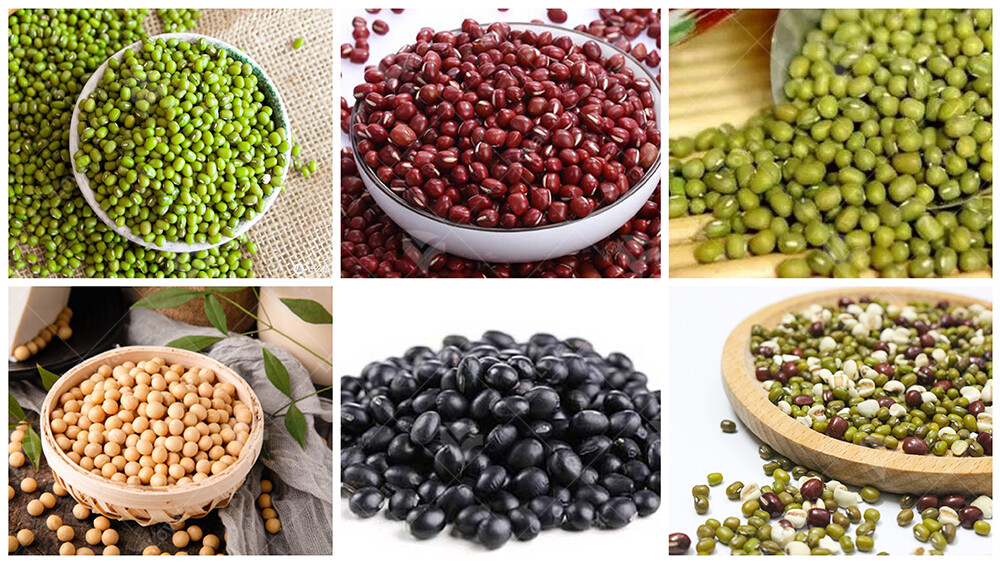
Evolution of Black Soybean Curing Machine Tunnel Microwave Dryer
The evolution of Black Soybean Curing Machine Tunnel Microwave Dryer has been marked by significant advancements in efficiency, precision, and versatility. Microwave drying technology has gained prominence due to its ability to rapidly and uniformly remove moisture from various food products, including black soybeans.
Initially introduced as a novel method for rapid heating and drying, microwave dryers have undergone substantial refinement to address the specific requirements of industrial food processing. Manufacturers have developed specialized tunnel microwave dryers tailored to the unique characteristics of different food items, such as black soybeans.
These modern microwave dryers boast enhanced control systems that allow for precise adjustment of power levels, temperature, and humidity, ensuring optimal drying conditions for black soybeans. Moreover, advancements in sensor technology enable real-time monitoring of moisture content, facilitating greater process automation and quality assurance.
In conclusion, the evolution of microwave dryers has revolutionized the landscape of industrial food processing, offering unparalleled efficiency and quality in drying operations. With ongoing innovation and refinement, these technologies continue to play a pivotal role in meeting the diverse needs of the food manufacturing industry, including the precise requirements of black soybean curing.
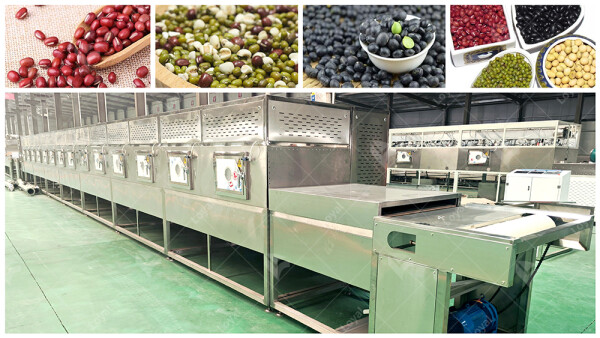
Understanding the Functionality of Tunnel Microwave Dryers
Tunnel microwave dryers play a pivotal role in the industrial food processing sector, especially in the context of black soybean curing. These sophisticated machines utilize microwave radiation to efficiently remove moisture from food products. The functionality of tunnel microwave dryers revolves around their design and operational principles.
Firstly, tunnel microwave dryers consist of a tunnel-like structure through which the food product passes on a conveyor belt. Within this tunnel, microwave-emitting components generate electromagnetic radiation at specific frequencies tailored for optimal drying of black soybeans. This radiation penetrates the food material, causing the water molecules to oscillate and generate heat. Consequently, the moisture content evaporates, leaving behind dried black soybeans.
Secondly, the efficiency of tunnel microwave dryers stems from their ability to evenly distribute microwave energy across the food product. This uniform heating ensures consistent drying throughout the batch, minimizing processing time and energy consumption. Additionally, advanced control systems regulate parameters such as microwave power, conveyor speed, and temperature, optimizing the drying process for maximum throughput and product quality.
In summary, tunnel microwave dryers function by harnessing microwave radiation to remove moisture from black soybeans in an efficient and controlled manner. Their design ensures uniform heating and precise control, making them indispensable tools in modern food processing facilities.

Importance of Proper Curing in Black Soybean Processing
Proper curing is paramount in black soybean processing to ensure the quality, safety, and shelf-life of the final product. Curing refers to the controlled drying of soybeans after harvest, a crucial step that significantly impacts their flavor, texture, and nutritional value.
Firstly, proper curing prevents spoilage and microbial growth in black soybeans. By removing excess moisture, curing creates an inhospitable environment for bacteria, mold, and fungi, thus extending the shelf-life of the product and maintaining its freshness.
Secondly, curing enhances the flavor profile of black soybeans by concentrating their natural sugars and aromatics. Through controlled drying, undesirable grassy or beany flavors are minimized, allowing the rich, nutty taste of black soybeans to shine through.
Furthermore, proper curing preserves the nutritional integrity of black soybeans by minimizing heat damage and nutrient loss. By carefully controlling the drying process, essential vitamins, minerals, and phytonutrients are retained, ensuring that the final product is not only delicious but also packed with health-promoting compounds.
In conclusion, proper curing is essential in black soybean processing to ensure food safety, enhance flavor, and preserve nutritional quality. By employing advanced curing techniques, food manufacturers can produce high-quality black soybean products that meet consumer expectations for taste, texture, and health benefits.
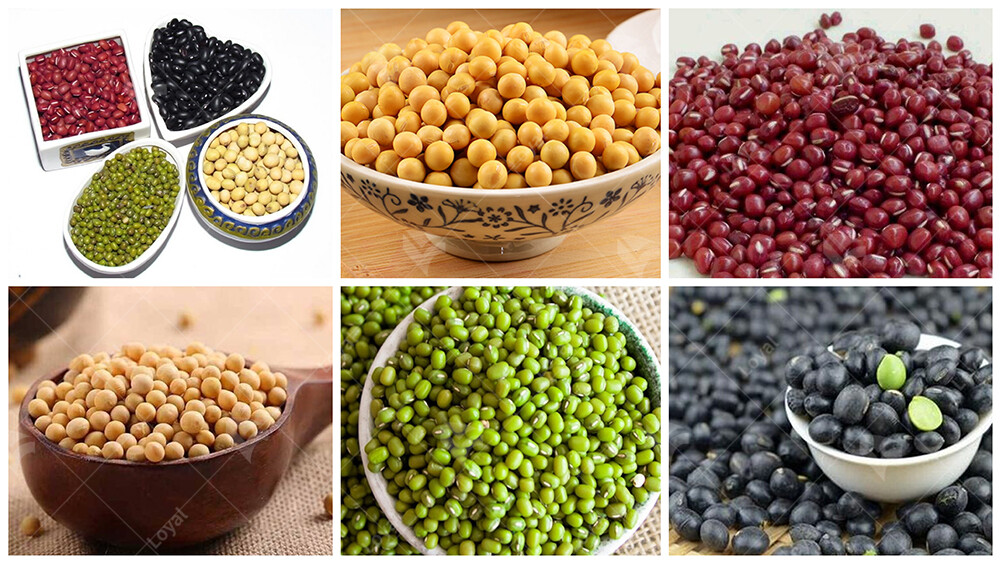
Design Features and Components of Black Soybean Curing Machines
Black soybean curing machines are pivotal in the processing of black soybeans, ensuring efficient curing and preparation for further production stages. Let's delve into the design features and components that make these machines indispensable in industrial food processing.
Black soybean curing machines are typically constructed with sturdy stainless steel frames to withstand the rigors of industrial-scale operations. The structure often comprises a tunnel-like chamber, facilitating the passage of soybeans through the curing process. This design ensures uniform exposure to the curing environment, promoting consistent results.
A robust conveyor system is integral to the functionality of black soybean curing machines. It enables the continuous movement of soybeans through the curing chamber, ensuring thorough exposure to heat and moisture. The conveyor's speed and design are optimized to achieve precise curing parameters while maintaining product integrity.
The heating mechanism in black soybean curing machines primarily relies on microwave technology. Microwaves penetrate the soybeans, generating internal heat and facilitating the curing process from within. This method ensures rapid and efficient curing while preserving the nutritional quality of the beans.
Sophisticated control and monitoring systems are essential components of black soybean curing machines. These systems allow operators to precisely regulate parameters such as temperature, humidity, and conveyor speed. Real-time monitoring ensures adherence to processing standards and enables adjustments to optimize curing efficiency.
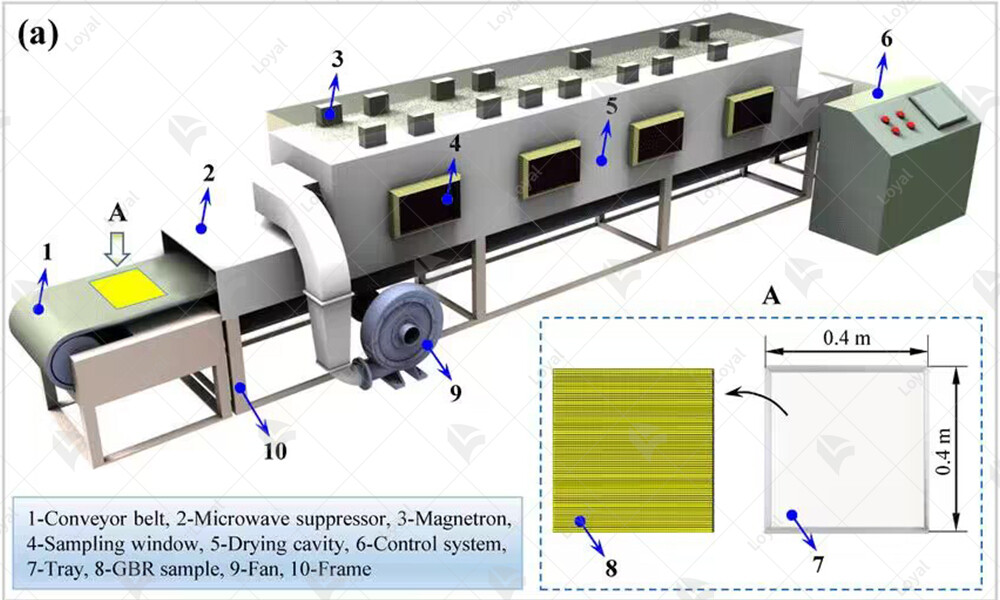
Advancements in Microwave Technology for Food Drying
Microwave technology has revolutionized the food drying process, offering numerous advantages over traditional methods. Let's explore the recent advancements that have enhanced the efficiency and effectiveness of microwave technology in food drying applications.
Recent advancements in microwave technology have led to improved heating uniformity throughout the drying chamber. Innovative design features, such as multi-mode microwave applicators and rotating turntables, ensure even distribution of microwave energy, resulting in consistent drying rates across the product.
Modern microwave dryers are equipped with advanced temperature control systems that allow for precise regulation of drying conditions. This level of control enables operators to achieve optimal drying temperatures for different food products, maximizing quality while minimizing processing time.
Integration of sensors and automation technology has streamlined the drying process, reducing the need for manual intervention. Sensors monitor key parameters such as moisture content and temperature, enabling automated adjustments to ensure optimal drying conditions. This not only increases efficiency but also reduces the risk of over-drying or product spoilage.
Advancements in microwave technology have led to significant improvements in energy efficiency. Innovative designs, such as recirculating air systems and variable power settings, minimize energy consumption without compromising drying performance. This not only reduces operating costs but also aligns with sustainability initiatives in the food processing industry.
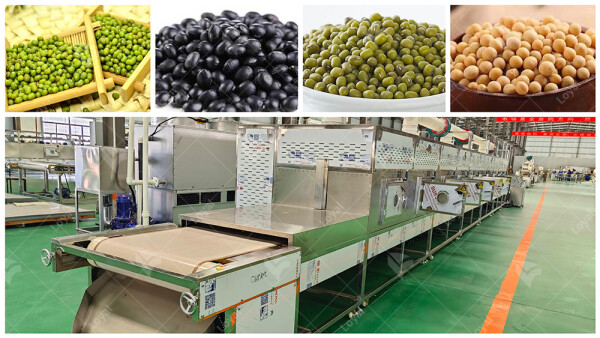
Optimizing Energy Efficiency in Microwave Dryer Operations
Microwave dryers play a crucial role in industrial food processing, including the curing of black soybeans. Optimizing energy efficiency in microwave dryer operations is imperative for reducing production costs and environmental impact while maintaining product quality.
One key strategy for enhancing energy efficiency in microwave dryer operations is utilizing advanced power control systems. These systems adjust the power output of the microwave generator based on real-time feedback from sensors, optimizing energy consumption throughout the drying process. By dynamically adjusting power levels, energy wastage is minimized, and drying efficiency is maximized.
Another approach to improve energy efficiency is ensuring proper equipment maintenance. Regular maintenance of microwave generators, waveguides, and other components helps prevent energy losses due to faulty or inefficient equipment. Routine inspections and repairs can identify and address issues that may lead to energy wastage, such as damaged seals or worn-out components.
Furthermore, employing innovative drying techniques can contribute to energy savings. For example, the use of pre-drying treatments, such as blanching or steam conditioning, can reduce the moisture content of black soybeans before they enter the microwave dryer. This allows for shorter drying times and lower energy consumption during the drying process.
Additionally, implementing optimized process parameters is essential for maximizing energy efficiency. Parameters such as drying temperature, airflow rate, and product placement within the microwave cavity should be carefully controlled to ensure efficient energy utilization. By fine-tuning these parameters based on product characteristics and process requirements, energy consumption can be minimized while achieving optimal drying outcomes.
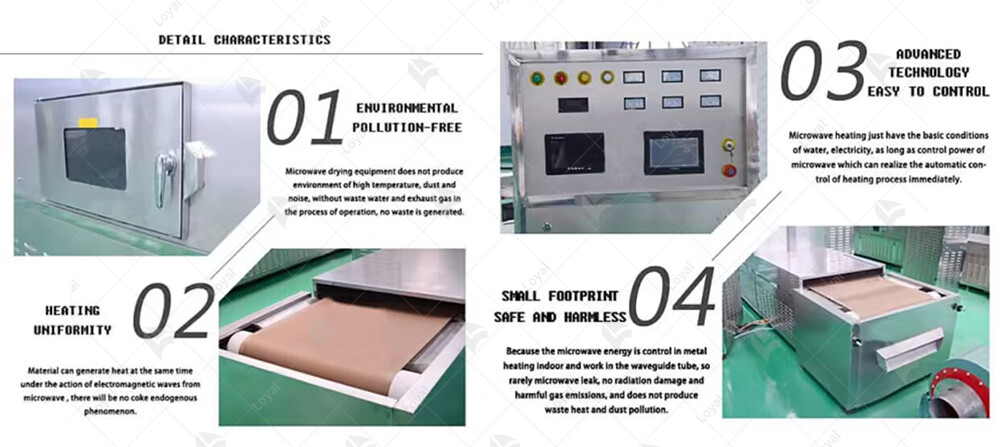
Quality Control Measures in Black Soybean Curing Processes
Maintaining high-quality standards is essential in black soybean curing processes to ensure product safety, shelf-life, and customer satisfaction. Implementing rigorous quality control measures is vital throughout each stage of the curing process to identify and address potential issues that may affect product quality.
One fundamental quality control measure is meticulous raw material selection. Choosing high-quality black soybeans free from defects, contaminants, and foreign materials is critical for producing premium cured products. Suppliers should adhere to strict quality standards and conduct thorough inspections to ensure the integrity of the raw materials used in the curing process.
Another important aspect of quality control is adhering to standardized processing procedures. Establishing and following standardized operating procedures (SOPs) for black soybean curing helps maintain consistency and uniformity in product quality. SOPs should outline specific parameters for each stage of the curing process, including soaking, steaming, drying, and packaging, to minimize variations and ensure reproducible results.
Additionally, conducting thorough quality inspections and testing at various stages of the curing process is crucial for identifying and addressing any deviations from quality standards. Visual inspections, sensory evaluations, and analytical testing for parameters such as moisture content, color, texture, and flavor help ensure that cured black soybeans meet established quality specifications.
In summary, implementing rigorous quality control measures, including raw material selection, standardized processing procedures, hygiene and sanitation practices, and quality inspections, is essential for maintaining high-quality standards in black soybean curing processes. By prioritizing quality assurance, food processors can produce safe, consistent, and premium-quality cured black soybeans that meet consumer expectations.

Safety Protocols and Regulations for Industrial Microwave Dryers
Industrial microwave dryers, including those used in black soybean curing processes, are subject to stringent safety protocols and regulations to ensure the well-being of workers and the quality of the final product.
1. Regulatory Compliance: The operation of industrial microwave dryers falls under the purview of various regulatory bodies, such as the Occupational Safety and Health Administration (OSHA) in the United States and the European Union's Machinery Directive. These regulations mandate the implementation of safety features and adherence to strict operational guidelines.
2. Electromagnetic Radiation Safety: Microwave dryers emit electromagnetic radiation to heat and dry food products. Ensuring that workers are protected from exposure to excessive radiation levels is paramount. Protective measures such as shielding, interlocks, and warning signs are employed to mitigate the risk of radiation exposure.
3. Equipment Maintenance and Inspection: Regular maintenance and inspection of industrial microwave dryers are essential to identify and rectify potential safety hazards. This includes checking for leakages, verifying the integrity of seals and gaskets, and calibrating safety mechanisms.
4. Training and Education: Proper training and education programs are crucial for workers operating industrial microwave dryers. They must be familiar with safety procedures, emergency protocols, and the correct use of personal protective equipment (PPE) to minimize risks and ensure safe operation.

Future Trends and Innovations in Black Soybean Curing Machine Technology
The field of black soybean curing machine technology continues to evolve, driven by innovation and advancements in food processing equipment.
1. Automation and Control Systems: Future black soybean curing machines are expected to incorporate advanced automation and control systems, allowing for precise monitoring and adjustment of curing parameters. This enhances efficiency, consistency, and product quality while reducing the need for manual intervention.
2. Energy Efficiency: There is a growing emphasis on developing energy-efficient black soybean curing machines to reduce operational costs and environmental impact. Innovations such as improved insulation, optimized heating systems, and waste heat recovery mechanisms contribute to greater energy efficiency.
3. Integrated Sensor Technology: Integration of sensor technology enables real-time monitoring of key parameters such as temperature, moisture levels, and product quality during the curing process. This data-driven approach facilitates proactive adjustments and optimization of curing conditions for better results.
4. Sustainable Practices: Future trends in black soybean curing machine technology prioritize sustainability, with manufacturers exploring eco-friendly materials, processes, and waste management solutions. This includes the adoption of renewable energy sources and the development of recyclable or biodegradable components.
References
The following are five authoritative foreign literature websites in the field of industrial microwaves:
1. IEEE Xplore Digital Library
Website: [https://ieeexplore.ieee.org/]
2.ScienceDirect
Website: [https://www.sciencedirect.com/]
3. SpringerLink
Website: [https://link.springer.com/]
4. Wiley Online Library
Website: [https://onlinelibrary.wiley.com/]
5. PubMed
Website: [https://pubmed.ncbi.nlm.nih.gov/]
 Telephone :+86-531-55583139
Telephone :+86-531-55583139 WhatsApp :+86 13256674591
WhatsApp :+86 13256674591 Email :
Email :










